Shridhar Prabhu Advocate, Bengaluru, India
(Speech delivered by Mr. Shridhar Prabhu, Advocate, at
the Ariyapala Hall, All Ceylon Buddhist Congress on December 29, 2017)
Venerable Dhamma
Teachers, Respected Dr. (Mrs.) Anula and Dr. Ajita Wijesundere and all other Office
bearers of the National Joint Committee, Respected Mr. Jagath Sumathipala, Hon’ble
Vice President of World Fellowship of Buddhists, and other WFB Bearers, Mr.
Senaka Weeraratna and Dignitaries on and off the dais, and my dear Dhamma
sisters and Dhamma brothers of Sri Lanka!
Ayubowan
from all your Dharma tradition sisters and brothers of Bharat.
It fills my
heart with and untold joy to be amidst you on this august occasion.
We are on our pilgrimage
in Sri Lanka from 23rd December, 2017. I cannot possible describe
about the solace that we have experienced from our visit of to the holy city of
Anuradhapura, Sigiriya, Polonnaruwa and then Maha Nuwara. Being amidst you all,
who are dedicated to the cause of Dhamma in itself is a pilgrimage.
Today morning,
we had been to a very special place called Pinnawala Elephant Orphanage,
arguably, the largest elephant orphanage in the world. It was indeed a heart
melting moment for all of us to see the baby elephants. Pinnawala is a classic
example as to how much compassion is filled in the heart of Sri Lanka.
It is such great
endeavours by a Buddhist nation that makes all Buddhists across the world proud
of our Dhamma and our people! The greatest contribution of Buddhism to the
world is Metta and Karuna with which the Buddha encompassed not just mankind
but the whole of creation all in all its forms and manifestations. Pinnawala is
living monument to this great Buddhist tradition. I once again reiterate that I
am proud to be from India, homeland of the
Buddha and proud to be a Buddhist and proud to be in Sri Lanka, a leading
Buddhist Nation and Polity.
I hope I would
not be exceeding my brief if I touch upon the aspect that Chapter II – Article
9 of Sri Lankan Constitution provides that
//The Republic of Sri Lanka shall give to Buddhism the foremost
place and accordingly it shall be the duty of the State to protect and foster the
Buddha Sasana, while assuring to all religions the rights granted by Articles
10 and 14(1)(e).//
My humble
request to you is that please preserve this great provision in Sri Lanka’s Constitution
in letter and in spirit. Please don’t allow yourselves to be led astray by the insincere
influence of foreign ideologies. By foreign I don’t mean from other countries,
I mean that ethos that is foreign and alien to the scheme of Buddha’s
teachings.
The architect of
the Indian Constitution, Dr. B.R. Ambedkar, a great Buddhist and proud son of
India has made the following provisions:
|
Aspect
|
Articles and provision
|
|
PART IV: DIRECTIVE PRINCIPLES OF STATE POLICY, 48: Organisation of
Agriculture and Animal Husbandry and 48A: Protection and improvement of environment
and safeguarding of forests and wild life
|
Per 48, the Constitution requires the State to take steps for
preserving and improving the breeds, and prohibiting the
slaughter, of cows and calves in other milch and draught cattle.”
Per 48A, the Constitution places a duty on the State to endeavour to
protect and improve the environment and to safeguard the forests and wild
life of the country.”
Per List III, Both Parliament and the legislature have the authority
to make laws on the following: [p]revention of cruelty to animals,”
protection of wild animals and birds,” [p]revention of the
extension from one State to another of infectious or contagious diseases or
pests affecting men, animals or plants.”
|
|
PART IVA:
FUNDAMENTAL DUTIES, 51A (g): Fundamental Duties
|
Per 51A, the Constitution places a duty on every
citizen to protect and improve the
natural environment including forests, lakes, rivers and wild life, and to
have compassion for living creatures.”
|
Though Directive
Principles are directional in nature our Supreme Court has held that they are
binding on us as polity. In fact, 24 of 29 States in India, including the State
of Jamu Kashmir have laws and regulations banning cow slaughter or sale of
cows. This is because of the Buddha’s
influence on our jurisprudence and constitutional framework. I would like to
see, being a historic Buddhist nation respected throughout the world for spreading
Buddhism, you too would incorporate provisions in any reform of your
Constitution to impose a moral duty on all persons inhabiting in Sri Lanka to
have compassion for living beings, including non – human animals. The quality and esteem of a Constitution is
enhanced when it also extends protection and care for the welfare of members of
other species that share this planet with human beings.
Ban on Liquor – In
fact, there is a liquor prohibition in the State of Gujarat ever since
continuously from 1958. The State where the Buddha attained enlightened namely
Bihar, too has done it recently and the same is a great living example for rest
of India and the world.
Answer to the present distortions of History
I come from India,
the land of The Buddha’s birth, enlightenment and parinibbana. But
unfortunately, Buddhists are miniscule minorities in this holy land! How!
There has been
humungous amount of historical research on the decline of Buddhism. Three
eminent personalities, who are responsible for the modern revival of Buddhism
in India, have thoroughly researched on this subject and have authoritatively concluded
that it is the Islamic advent that resulted in the decline of Buddhism.
This became
pertinent for these three scholars to dispel untruths because a systematic Goebbelsian
propaganda was unleashed by the pseudo secularists in India that it was the
philosophical victory of Hinduism over Buddhism that led to the decline of
Buddhism. In fact, many of the misinformed Hindu researchers themselves claimed
that Adi Sankara defeated the Buddhists in Dialogues and Buddhists accepted
defeat and quit India!! This is part of the systematic effort by the
imperialist forces – both Arab and European – to pit Hindus against Buddhists
and absolve themselves from having to account for their crimes against Buddhism
on Indian soil.
First and
foremost, of the scholars who brought out truth – much before the two – was
Anagarika Dharmapala. He worked with the oppressed masses of India decades
before Ambedkar. While taking the Buddha Dhamma to the oppressed, he never
pitted Dharmic traditions against one another. I would request you to kindly
read this important article written on the occasion of the 150th Birth
Anniversary of Anagarika Dharmapala.
I would leave
you with an article http://www.sundaytimes.lk/140914/plus/taking-the-dhamma-to-the-dalits-117240.html
The second
eminent scholar was VIshwaratna Dr. Ambedkar.
Of all these
three scholars It is utmost important to quote Dr. Ambedkar for important two
reasons. Firstly, a vast majority of Buddhists in India are followers of Dr.
Ambedkar. Secondly, Ambedkarism remains
the most distorted ideology today in India. Thirdly, because Ambedkar, known
for his acidic polemic against Hinduism, never compromised on the narrative of
truth. He never mixed his personal feelings when it came to academic research.
It is Dr. Amebdkar who smashed the pseudo theory of Aryan invasion and Aryan
and Dravidian divide and the pseudo secular theories perpetrated by the
Stalinist historians.
Ambedkar’s
ideology was totally distorted by his later followers. The concept of ‘Bahujan’
was ‘lifted’ from Buddhist teachings and was used for petty political gains in
India. In the name of Bahujan Samaj, Buddhists, especially the former
untouchables, were asked to forge camaraderie with Muslims and Christians and
destroy Hindus! In fact, Dr. Amebkar was falsely projected as an espouser of
Abrahamic religions! But please note
what he has to say in this regard:
//There can be no doubt
that the fall of Buddhism in India was due to the invasions of the Musalmans. Islam came out as the enemy of the ‘But’.
The word ‘But’ as everybody knows, is the Arabic word and means an idol. Thus the origin of the word indicates that
in the Moslem mind idol worship had come to be identified with the Religion of
the Buddha. To the Muslims, they were one and the same thing. The mission to
break the idols thus became the mission to destroy Buddhism. Islam destroyed
Buddhism not only in India but wherever it went. Before Islam came into being
Buddhism was the religion of Bactria, Parthia, Afghanistan, Gandhar, and Chinese Turkestan, as it was of the whole of Asia.
XXX
The Mussalman invaders sacked the Buddhist universities of Nalanda, Vikramshila, Jagaddala, Odantapuri to name
only a few. They razed to the ground Buddhist monasteries with which the
country was studded. The monks fled away in thousands to Nepal, Tibet and other
places outside India. A very large number were killed outright by the Muslim
commanders. How the Buddhist priesthood perished by the sword of the Muslim invaders
has been recorded by the Muslim historians themselves. Summarizing the evidence
relating to the slaughter of the Buddhist Monks perpetrated by the Musalman
General in the course of his invasion of Bihar in 1197 AD, Mr. Vincent Smith
says, “….Great quantities of plunder were obtained, and the slaughter of
the ‘shaven headed Brahmans’, that is to say the Buddhist monks, was so
thoroughly completed, that when the victor sought for someone capable of
explaining the contents of the books in the libraries of the monasteries, not a
living man could be found who was able to read them. ‘It was discovered,’ we
are told, ‘that the whole of that fortress and city was a college, and in the
Hindi tongue they call a college Bihar.’ “Such was the slaughter of the Buddhist
priesthood perpetrated by the Islamic invaders. The axe was struck at the very
root. For by killing the Buddhist priesthood, Islam killed Buddhism. This was
the greatest disaster that befell the religion of the Buddha in India….
~ Dr. B. R. Ambedkar, “The decline and fall of
Buddhism,” Dr. Babasaheb Ambedkar: Writings and Speeches, Vol. III,
Government of Maharashtra. 1987, pp. 229 and 338
These
opportunist elements should better read the following passage by Dr. Ambedkar:
//Hinduism is said to
divide people and in contrast Islam is said to bind people together. This is
only a half-truth. For Islam divides as inexorably as it binds. Islam is a
close corporation and the distinction that it makes between Muslims and
non-Muslims is a very real, very positive and very alienating distinction. The
brotherhood of Islam is not the universal brotherhood of man. It is brotherhood
of Muslims for Muslims only. There is a fraternity, but its benefit is confined
to those within that corporation. For those who are outside the corporation,
there is nothing but contempt and enmity. The second defect of Islam is that it
is a system of social self-government and is incompatible
with local self-government, because the allegiance of a Muslim does
not rest on his domicile in the country which is his but on the faith to which
he belongs. To the Muslim ibi bene ibi patria [Where it is well with me,
there is my country] is unthinkable. Wherever there is the rule of Islam, there
is his own country. In other words, Islam can never allow a true Muslim to adopt India as his motherland and regard a Hindu as his kith
and kin.//
(Source:
http://www.columbia.edu/itc/mealac/pritchett/00ambedkar/ambedkar_partition/412d.html)
For detailed
reading:
For a brief
overview
In sum, Dr. Ambedkar
was very critical of Hinduism but he never ever advocated destruction of
Dharmic tradition of India. He never wished to join hands with the Abrahamic
traditions and pit Buddhists against Hindus.
It is on purpose
that I have dedicated a good part of my speech on Dr. Ambedkar because he is
the most respected and most popular Indian Buddhist personality today.
Political parties and ideologues across the spectrum – from ‘Secularists’ to
‘Communists’ – Nationalists to Internationalists – swear by his name and claim
to be the successors of his legacy.
You may be a
little irritated, if not confused as to why am I wandering on the peripheral
issues instead of straightaway coming to the core issue of Challenges
confronting Buddhists in Asia, with special reference to South Asia and South-East
Asia.
In fact, the
decline of Buddhism from its motherland India, is central and most critical to
the enquiry on ‘Challenges confronting Buddhists in Asia’. The enquiry of decline of Buddhism in India
is nothing but an enquiry on Indic-ness and indigenousness in India. And as
long as India ignorant of this reality, Asia will also be in a blissful
slumber. As long as Hindus and Buddhists in India are busy with their infighting,
India will never be able to forge an alliance with the rest of Buddhist world. This
is not a theoretical proposition. In fact, this was practically and
successfully achieved by the enemies of Dhamma for the last one hundred years!
This harmed Hindus and Buddhists in equal
proportions. Hindus within India because of their numerical strength, military
might and other historical advantages Hindus could successfully thwart some of
the external aggressions to their Dharma and Nation. However, Hindus outside
India in rest of Asia especially in Pakistan, Bangladesh are so much affected
that they are now almost on the verge of extinction within a few years.
The challenges of Buddhists are even more
critical because we neither have numbers on our side nor do we have the
military might to counter the external aggression. Most importantly, we have not even realised
that we are in danger of history repeating itself in the remaining Buddhist
countries.
Bangladeshis
camouflaged as Rohingyas
Let us take the concrete case on hand – the
Rohingya issue. I personally feel that
we should shun the usage of the term ‘Rohingyas’ – because they are basically Bangladeshis
using the smokescreen of the label ‘Rohingyas’.
Thus having said that, I agree that there are multiple dimensions to this
issue. I also agree that it is against Dhamma to compartmentalise human
suffering into Muslim suffering and Buddhist suffering. But let’s examine the
harsh truth.
As per the undisputed official census records
of Myanmar, when they gained independence in 1948, there was very few Muslims
in Arakhan State. By 1973 Muslims were about one million. In 1983 Muslims
constituted about 19% of the Arakhan State in Myanmar. In 2014, Muslim
Population grew to 56%. And today, more than 80–96% of the population near the
border with Bangladesh and the coastal areas is Muslim.
I would like to ask the International Media,
which is branding the Buddhists of Myanmar as Terrorists, a simple question.
Today, officially, there are about 10% Muslims in Germany, France and
Netherlands. What will this international media do if this population increases
up by 80% in say twenty years from now, as it has happened in Myanmar.
Why is the western media not writing about
Arunachal Pradesh, in North East India, wherein once indigenous religions were
a majority and today the population of Buddhism has been reduced to 11% in last
two decades!
Now, let’s not dive into the number game. Let’s
see, at a thematic level, what challenges we, Buddhists are faced with.
Let’s begin with Bangladesh, the home to
Chakmas or Sakhyas, the community to which Buddha belonged. It is the Sakhyas
residing in the northern hills of Bangladesh who have kept the ancient Buddhist
culture alive. That is why this Sakhya community is being systematically chased
and attacked. Take for instance, the Kathina Chivara Dana ceremony of
Chakmas. For the first time I had the
good fortune of seeking this unique festivity in October, 2014. It is at this
juncture that I realised that if Chakmas are extinct there will be no bestowal
of cloths to our Venerable Bhikkhus. If Sakhyas die, the most basic and sacred
Buddhist traditions will be extinct.
India has helped provide citizenship to
Sakhyas. The recent initiative of Citizenship Act by Assam is an endeavour by
the present Central Government of India to help Hindus and Buddhists of the
region.
Wherever Buddhists are ruled by authoritarian
regimes – China, Cambodia, Vietnam and to some extent Nepal etc., we have
immensely suffered. But these issues are beyond us to resolve. So, it is better
that these issues be addressed as national issues of their respective regimes.
Hence, I would not wish to touch the controversial Tibetan issue and problems
of other Chinese Buddhists.
India and Sri Lanka – Our Constitutional
Issues in a democratic polity
Let us now consider India and Sri Lanka
together.
Constitutions of India and Sri Lanka guarantee
fundamental rights to citizens as well other persons. Consider Article 12 of
the Constitution of Sri Lanka
Article 12.
(1) All persons are equal before the law and are entitled to the
equal protection of the law.
(2) No citizen shall be discriminated against on the grounds of
race, religion, language, caste, sex, political opinion, place of birth or any
one of such grounds
This Article is pari materia tothe
Indian constitutional provisions:
Article 14.
The State shall not deny to any person equality before the
law or the equal protection of the laws within the territory of India.
19. (1)
All citizens shall have the right— (a) to freedom of speech and expression; (b)
to assemble peaceably and without arms; (c) to form associations or unions 1[or
co-operative societies]; (d) to move freely throughout the territory of India;
(e) to reside and settle in any part of the territory of India; 2[and] 3** * *
* (g) to practise any profession, or to carry on any occupation, trade or business
Utilising these rights guaranteed to the
noncitizens, in India, series of cases are being filed on behalf of the foreign
nationals – especially, Bangladeshis (so called Rohingyas included).
Constitution is being invoked to seek residence and then slowly citizenship. In
India, as per Union of India’s official statement there are about 20 Million
Bangladeshis illegally residing in India. This is equal to the total population
of Sri Lanka!
Both Sri Lanka and India have acceded to the
jurisdiction of the International Court of Justice for dispute adjudication. This will also be used against us in so far as
the foreign elements will invoke various Human Rights Conventions and institute
proceedings against us before the ICJ. This is likely to be the future.
Constitutional and International Jurisprudence will be the two biggest
armouries in the hands of adversaries of the Dharma traditions. While they
would deny fundamental rights to their own citizenry, they would be very prompt
in demanding all kinds of rights from us. The western world, being solely
interested in arms trading, will always encourage violent conflicts within a
nation and between nations and in the process cause the destabilisation of
Asia.
So-called liberals in India make so much
about Article 370 in India. Thanks to this Article, notwithstanding the
fundamental rights on residence guaranteed to Indian citizens, the citizens
residing elsewhere in India can be permanent residents of the State of Jammu
Kashmir. However, it is estimated that in Jammu City (the Winter capital of
Jammu Kashmir – wherein lakhs of Kashmiri Pandits are forcibly living under
displacement from their homes in Kashmir Valley) alone, around ten thousand
Bangladeshi Muslims are staying there under the garb of Rohingyas. How can this
be permitted?
Small and Subtle-
which we can’t ignore.
Ladakh sector of Jammu Kashmir is dominated
by Buddhists. However, in Kargil Town, Buddhists are struggling to construct a
temple. Forget Sri Nagar, we are not able to construct a small temple in
Kargil! The whole world speaks about Kargil victory of India. But how many of
us know that Buddhists are living as outcastes in their own hometown in Kargil?
While Leh is 80 per cent Buddhist and 20 per cent Muslim, the numbers are
exactly the reverse in Kargil, which is predominantly Muslim now. It is
estimated that 90% interreligious marriages in Kargil are between a Muslim boy
and Buddhist girl. A new term called Love Jihad has come to be coined in India,
wherein, it is suspected that boys from their own religions are brain washed to
seek and marry a non-Muslim girl and convert her to their faith. Many liberals
have denounced it as a hoax until the Hon’ble Supreme Court of India had
directed the apex investigating body National Investigative Agency to conduct a
thorough investigation into the ‘Hadia matter’. See http://www.hindustantimes.com/india-news/sc-orders-nia-probe-into-kerala-girl-s-conversion-marriage/story-uRu5MqsLshNOO4iqRZidKM.html for more details.
There are small and subtle challenges in our
regions. I have carefully observed certain things in Sri Lanka. Buddhists here
worship Hindu gods such as Ganesh, Velu Murugan etc. While I see one positivity
that both Dharmic traditions are being respected. However, Buddhists of Sri
Lanka will be neither here nor there if such blind practices are perpetrated.
This seems to one of the core but subtle challenge that Buddhists in Sri Lanka
need to resolve internally. Though these issues are very small but we can’t
ignore the same.
I being an outsider, may be pardoned if I
have overstepped my brief in sounding instructive in my approach, particularly
when such scholarly and erudite people are amidst us in this audience.
The way forward
I am a total novice to the affairs of Sri Lanka.
However, in my estimate, Buddhists in Sri Lanka may be far less than 70% as is
being claimed on the basis of 2011 census. Even presuming without admitting
that Buddhists are in such big numbers, mere numerical majority does not
guarantee any safety.
The whole of organised media conglomerates in most
of Asia including Sri Lanka are controlled by non-Dharmic forces and they are hell
bent upon denigrating and lowering the image of Dharmic nations such as India
and Sri Lanka, through a sustained campaign of vilification of Hindu and
Buddhist monks and their leaders.
Recently, I read an article in ‘Christian Today’ bashing
Buddhists in Sri Lanka.
The article us titled The World’s Biggest Christmas
Tree Hasn’t Helped Sri Lankan Christians”
Read: http://www.christianitytoday.com/news/2017/december/sri-lanka-guinness-worlds-biggest-christmas-tree-christians.html) and claims that Christians in Sri Lanka are
persecuted in huge numbers. The author with a Sikh name (ghost-writer in every
sense of the term) goes on to defame Sri Lanka in general and Buddhists in
particular. Any onlooker of international affairs would think that Sri Lanka is
a gas chamber for Christians! Now, the so-called liberals and intelligentsia
are fast to grab this opportunity to attack the Dharma as the cause of all the
trouble in these respective countries.
As an interesting aside, let me tell you that
as practicing Buddhist, I have always been sceptical of prophecy and astrology.
However, on a jocular note I must confess that, whenever I read Mr. Senaka
Weeraratna’s articles, I revisit my views on astrology. It is astonishing that
about four to five months before the last Indian General Elections in 2014, Mr.
Senaka Weeraratna had predicted in an analysis of the Indian political
landscape, that Mr. Modi will be the Prime Minister of India and it would be
great opportunity for Sri Lanka in particular and the Buddhist world in general
to take stock of this possible change in the Government of India and act
accordingly. Though a popular opinion was already in favour of Modi, there were
several influential sections within India who had seriously doubted Modi’s
ascendance to power. Being so much far away and being a distant observer of Indian
politics, I am amazed at the acumen and commitment of such personalities in Sri
Lanka. Whenever I see Mr. Senaka Weeraratna’s writings, I am enthused about the
future of the Dhamma in Sri Lanka and in rest of India.
It is largely because of Sri Lanka that
Buddhism is alive in India and rest of the world today. It is Venerable
Anagarika Dharmapala who played the pioneering role in the revival of Buddhism
in India. It is primarily Sinhalese monks from Sri Lanka who gave Deeksha to
Dr. Ambedkar.
To understand the appreciate the phenomenal contributions
of Sri Lanka to my India, please see what Acharya Buddharakhita has written about
the birth of the Maha Bodhi Society in India
//On the occasion of 2500 Buddha
Jayanti I decided to resign from Nalanda Post Graduate Institute, went to
Buddhagaya to meditate and offered one lakh deepa puja for one full month. I
got a clear mind about future activities. That is how, when Mrs. Bianca
Moonasinghe the niece of Venerable Anagarika Dharmapala, and the wife of the
General Secretary of Sri Lanka Maha Bodhi Society, and the head of Mahabodhi ladies
committee, approached me saying that she got some land given by Maharaja of
Mysore which was lying idle and some people had encroached on the land and
nothing is happening, etc. I accepted the offer with the condition that I will
not be another bhikkhu employee as in other centers of Maha Bodhi Society. Ours
will be an independent society, and as President I will conduct activities in a
practical way through seva and sadhana programs. She was more than happy and
that is how I came to Bangalore on 5th June 1956.
Today, am before you as a Upasaka associated
with Maha Bodhi Society, one of the largest Buddhist organisations in India. (Ref:
http://www.mahabodhi.info/). //
In fact, it is our Dharmic brothers, the Hindus,
who helped Maha Bodhi society. In fact, it was Mr. Shyamaprasad Mukherji, founder
of Bharatiya Jan Sangh (predecessor of BJP the party of Mr. Modi) and India’s
first Industry and Supply Minister, who helped Anagarika Dharmapala to build a
glorious temple in Buddha Gaya and that’s how Buddhism was revived.
Mr. Shyama Prasad was also affiliated with
the Buddhist Mahabodhi Society. In 1942, he succeeded Dr. M.N. Mukherjee to become the President of the
organisation. The relics of Gautam Buddha‘s two disciples Sariputta and Maudgalyayana, discovered in the Great Stupa at Sanchi by
Sir Alexander Cunningham in 1851 and kept at the British Museum, were brought back to India by HMIS Tir.
A ceremony attended by politicians and leaders of many foreign countries was
held on the next day at Calcutta Maidan. They were handed over by our first Prime Minister Nehru to his cabinet
colleague Mr. Mukherjee, who later took these relics to Cambodia, Burma, Thailand and Vietnam.
Upon his return to India, he placed the relics inside the Sanchi Stupa in
November 1952. Mr. Modi regards Mr. Mukherji as his revered Guru in every sense
of the term. So, you may imagine in how much high esteem Mr. Modi holds
Buddhism.
As an interesting aside, if I may share with
you that Mr. Senaka Weeraratna had written an article on the need for a noise
free environment at the Maha Bodhi Temple at Buddha Gaya – the centre of
Buddhism where the Buddha attained enlightenment. A serene and peaceful
atmosphere conducive to deep meditation and contemplation, is no longer
possible at the Maha Bodhi Temple because of the constant disturbance of calls
to prayer (Azan) emanating from a loudspeaker(s) at a newly constructed mosque
just 60 meters away plus other mosques
in the Buddha Gaya temple complex.
Now, that’s a very small matter as compared
to this narrative: In July, 2008, a series of 21 Bombs were blasted in
Ahmedabad killing 56 people and severely injuring 200 and more. Now, these
terror suspects were arrested in Buddha Gaya in September, 2017!! What were
these dreaded terrorists doing in Buddha Gaya? Tausif Khan, the master mind
(called as Master ji) was the main person accused of these blasts! Now, we have
to ask, how safe are our holy places?
Of course on the Azan problem, one needs to
remind our Muslim brothers with great compassion that even before the loud
speaker was invented, Islam was the second largest religion in the world.
Hence, they need not place such heavy reliance on UnIslamic means (constantly
disturbing non – Muslims by use of loudspeakers attached to Mosques built in
close proximity to major centres of non – Muslims religions) to spread their
religion.
Success Story
of Jains – Numbers never matter
The biggest challenge faced by the Sri Lankan
(mainly Sinhala) Buddhists seems to be akin to that of Hindus in India.
Buddhists seem to be in blissful complacence rejoicing their so called ‘numeric
majority’. In fact, we should draw lessons from miniscule minority Dharmic
Traditions such as Jainism in India.
There are around four Million Jains in India.
This constitutes about 0.032% of the Indian population. Thing being the case,
the largest political Party in India BJP, which is the ruling Party of India is
headed by a Jain called Amit Shah! One of the largest industry conglomerates in
India – Adanis and Sun Pharama are owned by Jains. Largest circulated English
Daily in India – Times of India is owned by Jain Family and Malayalam Daily
Matrubhumi is by a Jain. Governor of Gujarat and Chief Minister of Gujarat are
Jains. Acharya Rajanish or Osho was a Jain. I can go on and on.
Jains in India have shown as to how their
strategic alignment at the political and industry level can work. Jains have
shown the way forward for the Buddhists across the world. We have to politically, strategically,
economically align with the Dharma traditions – with Hindus, Sikhs, Jains and
Indigenous religions across the World. This seems to be our future. And there
lies our capacity for preservation and fostering of our religion.
Only with strategic
alignment Dharma will survive and be Victorious
Be that as it may. Let’s leave the past to
take care of itself. Buddhists of India and Sri Lanka should make most of the
benign regime of India today. Modi government wants to take the message of Dharma
across the globe. India, as the able successor and leader of Dharmic traditions
is now fostering Buddhism. We should join hands in two ways. One at an idea
level, we should support the international endeavours of the Indian Government.
As a small contribution, I must share with you, I am already in talks with the
office of the Additional Solicitor General of India South India and Indian Law
Ministry. They are very keen to come to Sri Lanka. We can propose to hold a
conference of Lawyers of Indic and Indigenous faiths and religions to chalk out
an international strategy in our common interest.
Now, apart from these kinds of endeavours to
be initiated at personal levels, there is something we need to do collectively.
One thing is for sure. Dhamma can only be practiced and protected collectively.
When the whole world is antagonistic to you, how can you individually remain
Dharmic? Hence, practising Dharma means growing more and more strategic at
macro level. This is more crucial and vital task than personally observing
Dharmic rituals and faiths.
World has always been skewed and strategic.
Neutrality, non-alignment and secularism are always for others consumption and
never for self-practice. Only Dharmic
people are advised to be secular. In fact, the world has never been ‘secular’
and will never be in future.
As individuals, people may be atheists,
rationalists, irreligious. However, as polity they are always religion minded or
strategically aligned to one religion or the other. It is a popular misconception that the world
is growing less and less religious today.
This is a popular myth perpetrated to confuse and mislead the Dharmic people.
Out of the 7.6 Billion people living in the
world today, nearly 2.1 Billion people are Christian and 1.3 Billion people
follow Islam. Now, we tend to think that the west has grown less religious. It
is not true. The UK officially is a Christian country even from the ancient
times. The USA has huge tax exemptions and encourages free contributions to
church. In fact, but for the USA the ‘conversion shop’ of the missionaries
would have been long closed. It is a popular myth that Nordic countries are
non-religious. The official religion on Denmark, Finland, Norway, Iceland,
Estonia is (Lutheran) Christianity. Russia is a very rigid follower of Orthodox
Christianity. About 70% of church revenues come from church
tax (Kirchensteuer). Apart from a lot of major cantons of Switzerland, the
official religion of Argentina, Bolivia, Costa Rica, El Salvador, Liechtenstein, Malta
and Monaco
is Roman Catholicism. Greek Orthodox Church and Finnish
Orthodox Church are official
religions in respective jurisdictions. Church of England is established by law. Queen is the official
head of the world-wide Anglican Communion.
The members of Church of Sweden pay church fee, which varies between municipalities, but can be as
much as 2%. Church and
state are separated as
of 2000; however, the burial tax (begravningsavgift) is paid by everyone
regardless of membership. Italy pays 0.8 percent Church Tax. In Austria, it is
compulsory to pay church tax at the rate of 1.1 percent.
In short, EU, NATO etc., are nothing but de
facto Christian strategic alliances.
About 57 countries today are members of one
of world’s largest and most strategic organisation known as Organisation of
Islamic Cooperation. The bond between the Islamic countries is so much strong
and cemented that Article 3(e) of the Conditions for Accession to Observer
Status at OIC says:
A state applying for observer
status shall not be in conflict with any of the OIC member states.”
While none of the member states of OIC is
secular in any sense of the term, they always pressurise a non-Muslim country
to observe secularism. Islamic world always acts strategically and
collectively. From smallest to the most critical of the issues confronting Muslims,
they speak in one language and they are always on one page!
Now, communism itself is a State religion.
Thus, China, North Korea have their respective gods, popes and pupils. Nepal,
the only Hindu country, was turned into a secular state.
In short, only Dharmic States that are forced
to go secular. In fact, secularism is a tool and subtle ploy to kill Dharma. If
all these rationalists and intellectuals really intend to promote ‘ secularism
‘ let them start with the NATO and OIC Nations. Why target the unorganised ones
such as ours?
It is precarious reality that Buddhism today
is the most unorganised religion in the world. Except Sri Lanka I don’t think
the very thought of organising ourselves at a strategic level has come to the
mind of any other nation with a Buddhist population.
In 1950s Sri Lanka gave to the World
Fellowship of Buddhists (WFB), the most revolutionary and strategic
development of its time. The Buddhist Flag adopted during this time is also the
most important development. But. World has become much more strategic ever
since then but we, unfortunately, have remained stagnant ever since then. We
either progress or perish.
In my humble opinion, the Buddhists of the
world today have to strategically align with India. When I say align, it does not mean efface our
identity and merge. It means only align
with consciously retaining our identity and interests.
Due to a variety of conspiracies, there is
large scale misunderstanding about India. We think, India is all about Tamils
and that all Tamils are against Sri Lanka. It is not at all true. An
overwhelming majority of Indians, Tamils included, we love Sri Lanka. We are
spiritually indebted to Sri Lanka in so many ways. If not for Hindu leaders
such as Shyamaprasad Mukerji, the Mahabodhi Temple could not have been
constructed by Anagarika Dharmapala.
AIADMK, the party in power in the province of
Tamil Nadu for last ten years or so has been deadly against LTTE. It is only a
few fringe elements within small pockets of India who have had a temporary
misunderstanding with Sri Lanka. Now all that is a thing of the past.
In fact, I must share with you, C. Iyothee
Thass (20th May, 1845 – 1914), a leading Tamil spiritual leader, was
the pioneer of Buddhism in India. Even before Dharmapala and Dr. Ambedkar, it
was Thass who pioneered the efforts to revive Buddhism. Iyothee Thass met Colonel H. S. Olcott with his followers and expressed a
sincere desire to convert to Buddhism. According to Thass, the Paraiyars
of Tamilakam were originally Buddhists With Olcott’s
help, Thass was able to visit Ceylon and
obtain diksha from
the Sinhalese Buddhist monk Bhikkhu Hikkaduwe Sumangala Nayake Thero. On
returning, Thass established the Sakya Buddhist Society in Madras with
branches all over South India. The Sakya Buddhist Society was also known as the Indian Buddhist
Association and was established in the year 1898. Even today, there is a
Buddha Vihara in Wheelers Town in Bengaluru started by Iyothee Thass.
Modi regime today is aggressively pushing for
Buddhist unity. In fact, India has been strongly supporting the International
Buddhist Confederation. It is being supported right at the level of Prime
Ministers Office. India’s approach today is wholly changed. Modi’s first visit round of when he assumed
office as PM was to a series of Buddhist countries. India is not playing big
brother but a caring mother for Buddhist nations. We, the Buddhists, must make
most of this. We must strengthen the hands of Modi regime in our own best interests.
We must engage India to promote global
strategic cooperation inter se the Dharmic World. The heart of India will
always remain Buddhist. Our national emblem, Ashoka Chakra in the centre of our
flag symbolises that India is predominantly Buddhist within its heart. This is
what a leading journalist had to say some time ago:
//Why was the code word to
announce the success of Pokharan-1 in 1974 Buddha is smiling”? My friend and
former colleague Vinay Sitapati (look for his fine biography of P V Narasimha
Rao, Half-Lion, next week) finds the answer in his research. It seems Raja
Ramanna was also aware of the history of Vaishali’s destruction by Magadha. The
legend is, Buddha was upset about it and thought the war could have been
avoided if Vaishali too had deterrent military power rather than its so-called
direct democracy so nobody would take hard decisions. You can only have peace
between equally strong or equally weak nations,” he is supposed to have said;
that’s why Ramanna told Indira Gandhi Buddha is smiling” as India had acquired
its deterrence. //
India without Buddhism will always be
incomplete. Hence, India and Sri Lanka are natural allies. The bonding of
Dhamma between us has always remained and will ever remain.
I take this opportunity to offer my salutations
to Venerable Mitirigala Dhammanissanti Thera with whose blessings I am sure
that the cause of Dhamma is being espoused in the rightful manner by Mr.Senaka
Weeraratna. I must tell you that I am here
before you only because of him and I wholeheartedly owe this all to him.
I am deeply indebted to the National Joint
Committee for providing me this opportunity. Dr. Wijesundere family has been a
constant source of inspiration in the Dhamma work. My sincerest gratitude to Jagath Sumithipala, Vice President of the World Fellowship of Buddhists for
taking out time from his busy schedule. I once again seek blessings from all
Dhamma Teachers.
I pray that may Lord Buddha shower his
choicest blessings on the people of Sri Lanka. Let the cause of Dhamma be
victorious. Let the Buddhist Brotherhood and Dharmic Unity of Sri Lanka and
India be victorious!
Bharat Mata Ki Jai! Vande Mataram!! Jaya Jaya
Sri Lanka. Long live the World Fellowship of Buddhists Long Live National Joint
Committee of Sri Lanka!! Long Live the Unity and Integrity and Sovereignty of
Sri Lanka!!
Buddham Saranam Gacchami!
Dhammam Saranam Gacchami!
Sangham
Saranam Gacchami
Metta!!
Bio Sketch
of Mr. Shridhar Prabhu
Shridhar Prabhu is the Managing
Partner of Navayana Law Offices, a Bengaluru based niche’ law Firm specialising in Energy Laws. Mr. Prabhu though
based in Bengaluru practices in various High Courts and Tribunals throughout
India.
Shridhar Prabhu was born on 25th
December, 1976. He completed his Pre University education in Karnataka College
Dharwad and obtained his Bachelor of Academic Laws and LL.B (Five Years
Integrated) Degree from Bangalore University Law College (BULC).
He was a leading student activist
during his undergraduate days at BULC.
He was an Executive Committee Member of the BULC and Chairperson of the
Model Parliament Committee of BULC.
After graduating in 2001 Mr. Prabhu
had worked under leading lawyers practising in Delhi handling work in the
Supreme Court of India, Delhi High Court and Central Administrative Tribunal of
India. He returned to Bengaluru in 2002 and after a brief stint of working with
the private sector, Mr. Prabhu branched in to and specialised in Energy Laws.
He holds a string of appointments as a Legal Advisor to a number of Industry
Associations and trade bodies.
Mr. Shridhar Prabhu has been
associated with the Maha Bodhi Society, Bengaluru, as legal advisor. With his
team of like minded Lawyers in High Court of Karnataka, Mr. Prabhu has been
active in the Advocates Association Bengaluru, organising a Dhamma Discourse
Programme High Court of Karnataka with Venerable Bhante Ananda and Venerable
Bhante Sugatananda involving the Judges of High Court of Karnataka and Advocate
General of Karnataka State. Mr. Prabhu writes in Kannada language on
contemporary social and political themes to various online and offline
publications.
He is a practising Buddhist and is
associated with various organisations involved in the dissemination of
Buddhism.
He is happily married to Mangala
Prabhu, an Advocate and is blessed with two sons – Manthan (12) and Bhuvan (5).

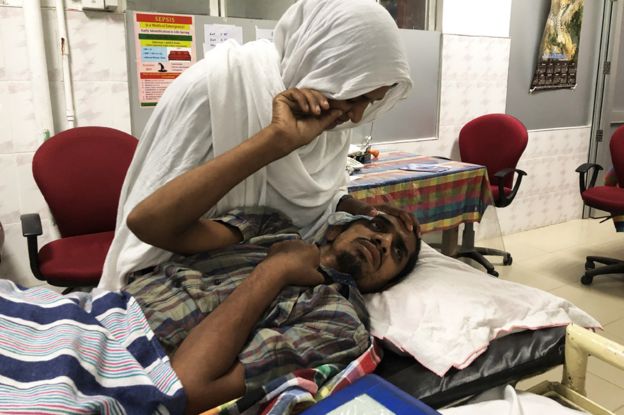
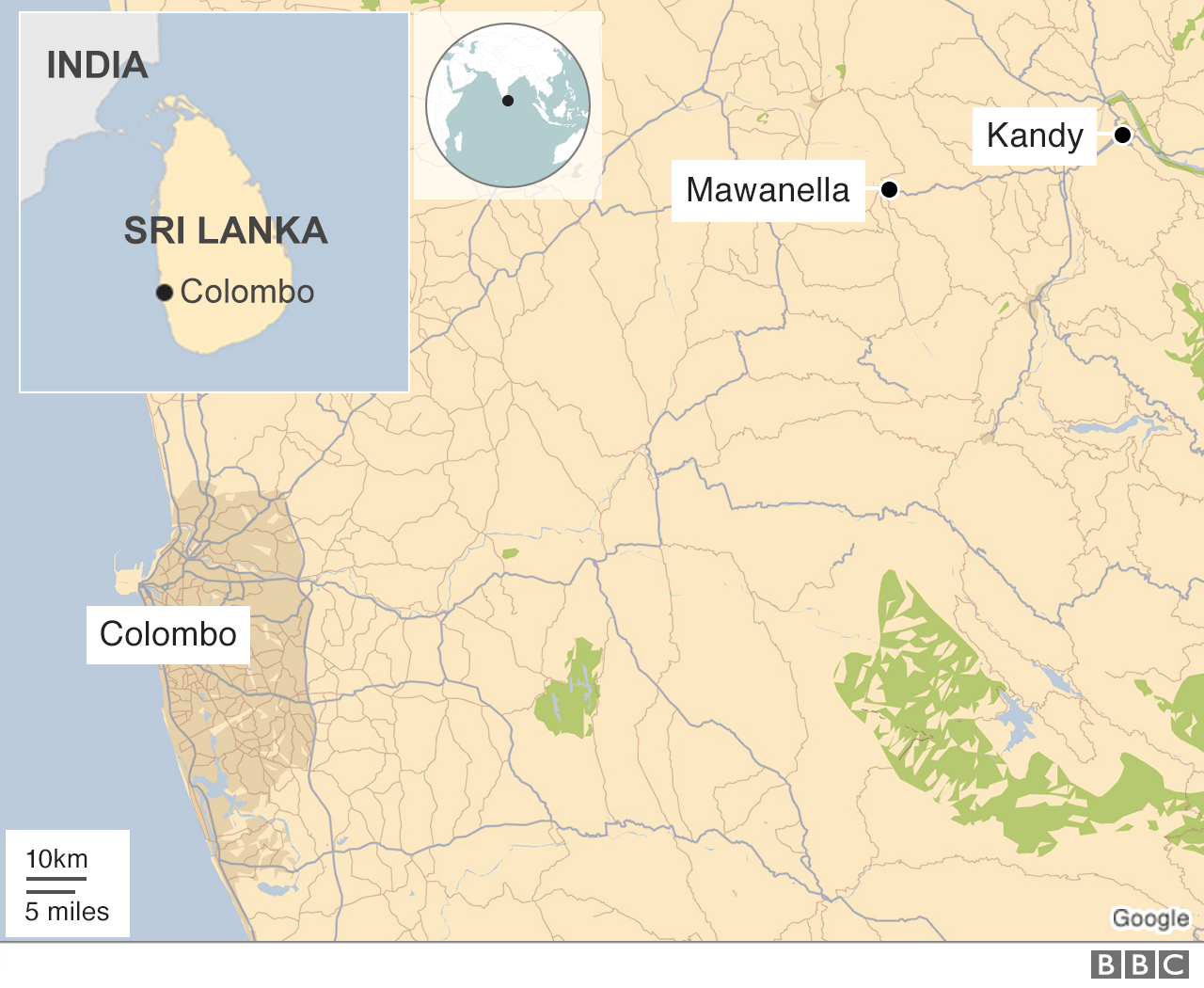
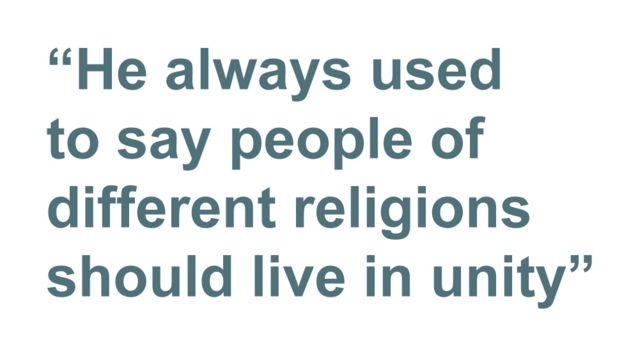
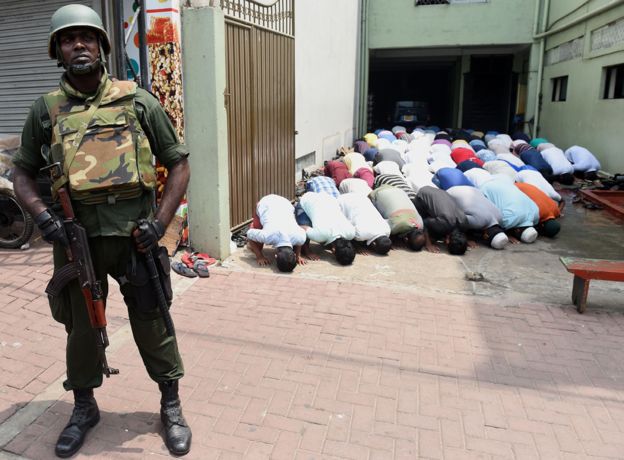
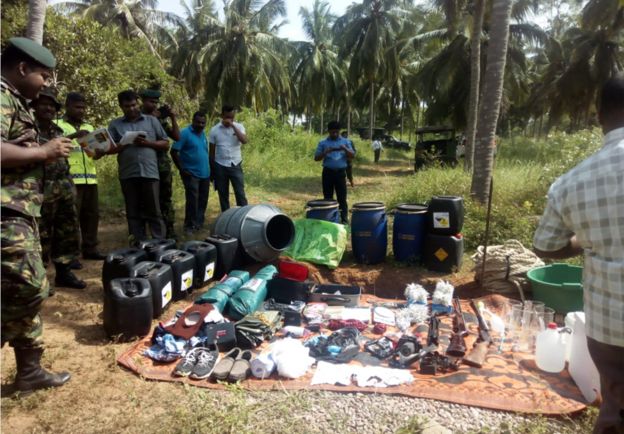


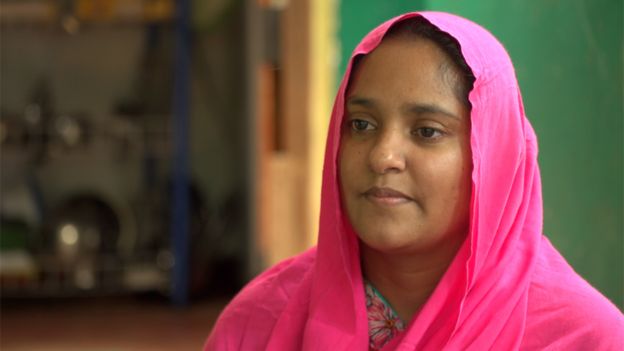



-kwk-23.jpg)
-Ckg.jpg)
-DMP-3.jpg)